Why Lighting Trumps Expensive Cameras in Portrait Photography
When it comes to portrait photography, many assume that the key to stunning images lies in having the latest and most expensive camera equipment. However, the truth is that the most critical factor in creating captivating portraits is not the camera but the quality of lighting. In this blog, we’ll explore why lighting is paramount, the benefits of different lighting types, and how Fresnel lighting has shaped the aesthetics of my portrait scenes.
The True Portrait Star: Quality Lighting
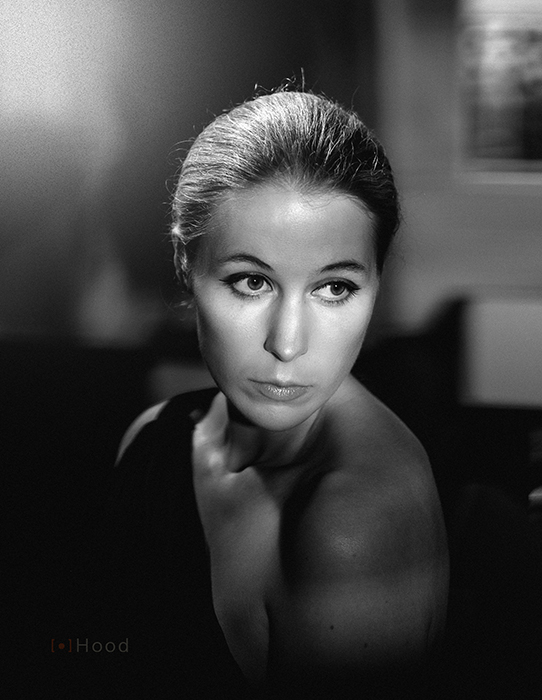
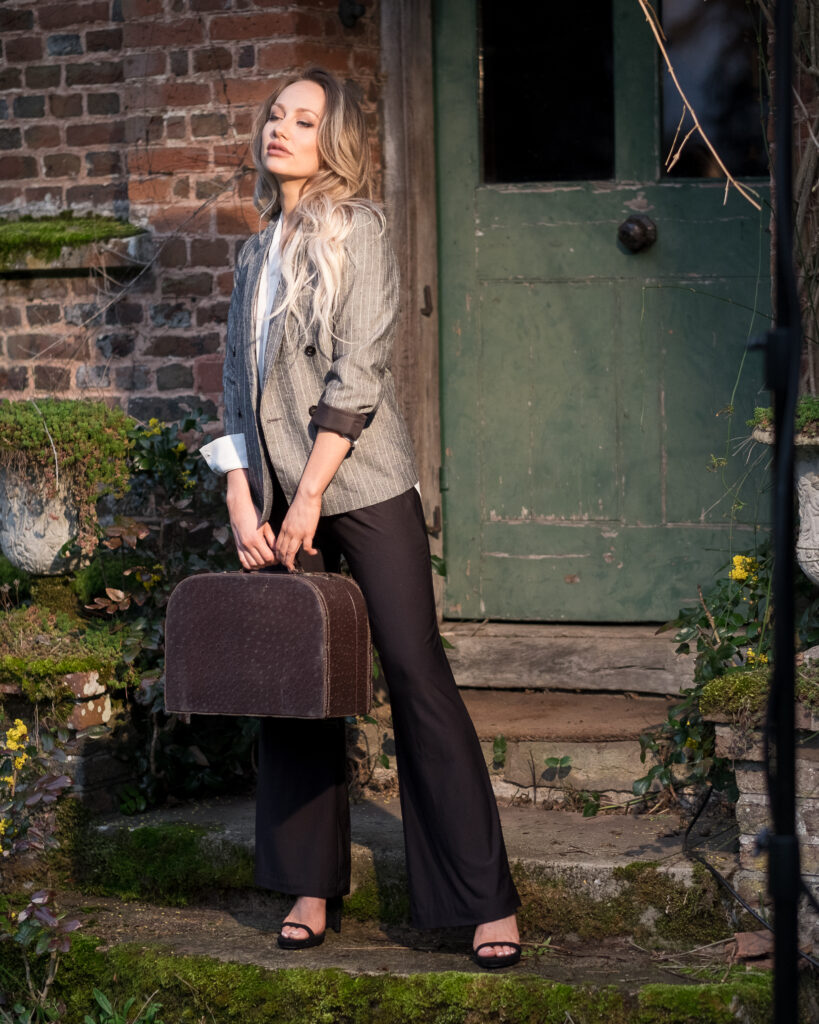
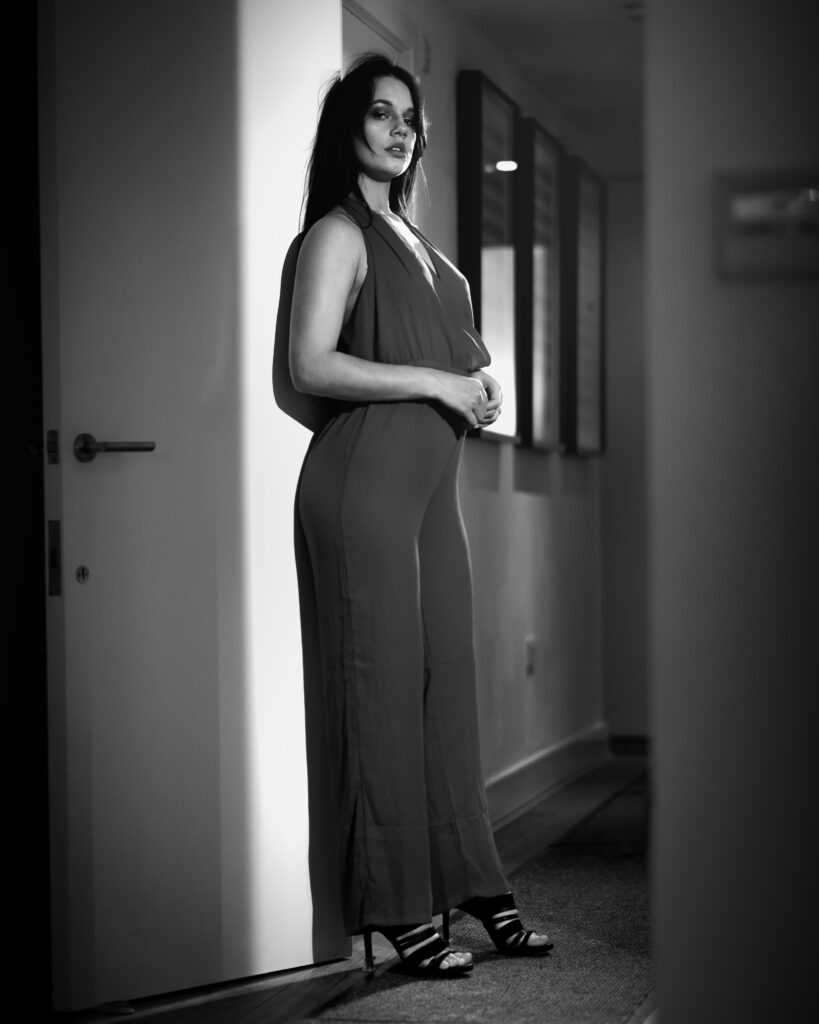
Flash Lighting
Flash lighting is known for its ability to create crisp, well-defined images. However, it comes with its own set of challenges:
- Power and Angles:
- Flash lighting requires extensive testing to determine the right power settings and angles. This experimentation is crucial to avoid harsh shadows and overexposure.
- Soft Boxes:
- To soften the intensity of flash lighting, soft boxes are essential. They diffuse the light, creating a more flattering and natural look. Without soft boxes, flash lighting can be too harsh, leading to unflattering portraits.
While flash lighting can produce excellent results, it demands a lot of preparation and adjustment to achieve the desired effect. In my opinion flash light photography can be fun to experiment with, if you have the time to do so. It will certainly give you an understanding of lighting positions and lighting stops. The cost of a speedlite is far cheaper than continuous Fresnel lighting but flash strobes and continuous lights can be found at reasonable prices these days.
Continuous Lighting
For many photographers including myself, who aim to recreate Classic Hollywood scenes or dramatic cinematography, continuous lighting is the preferred choice. Here’s why:
- Ease of Setup:
- Continuous lighting is straightforward to set up. Unlike flash, where the final outcome is only seen after the shot, continuous lighting offers a “what you see is what you get” scenario. This real-time feedback makes it easier to adjust and perfect the lighting setup.
- Control and Consistency:
- With continuous lighting, you have constant illumination, allowing for greater control over shadows and highlights. This consistency is particularly beneficial for portrait photography, ensuring that each shot maintains the same lighting quality. I like to record small movies during my photoshoot to give a fully visual experience and having the Fresnel film lighting on set is another benefit in helping light up my models and scene for filming.
My go to lighting for control of gradient hard to soft edges, with the ability to focus direction and change colour temperature are Fresnel Spot Lights.
- With continuous lighting, you have constant illumination, allowing for greater control over shadows and highlights. This consistency is particularly beneficial for portrait photography, ensuring that each shot maintains the same lighting quality. I like to record small movies during my photoshoot to give a fully visual experience and having the Fresnel film lighting on set is another benefit in helping light up my models and scene for filming.
The Magic Fresnel Cinematic Lighting In Your Portrait

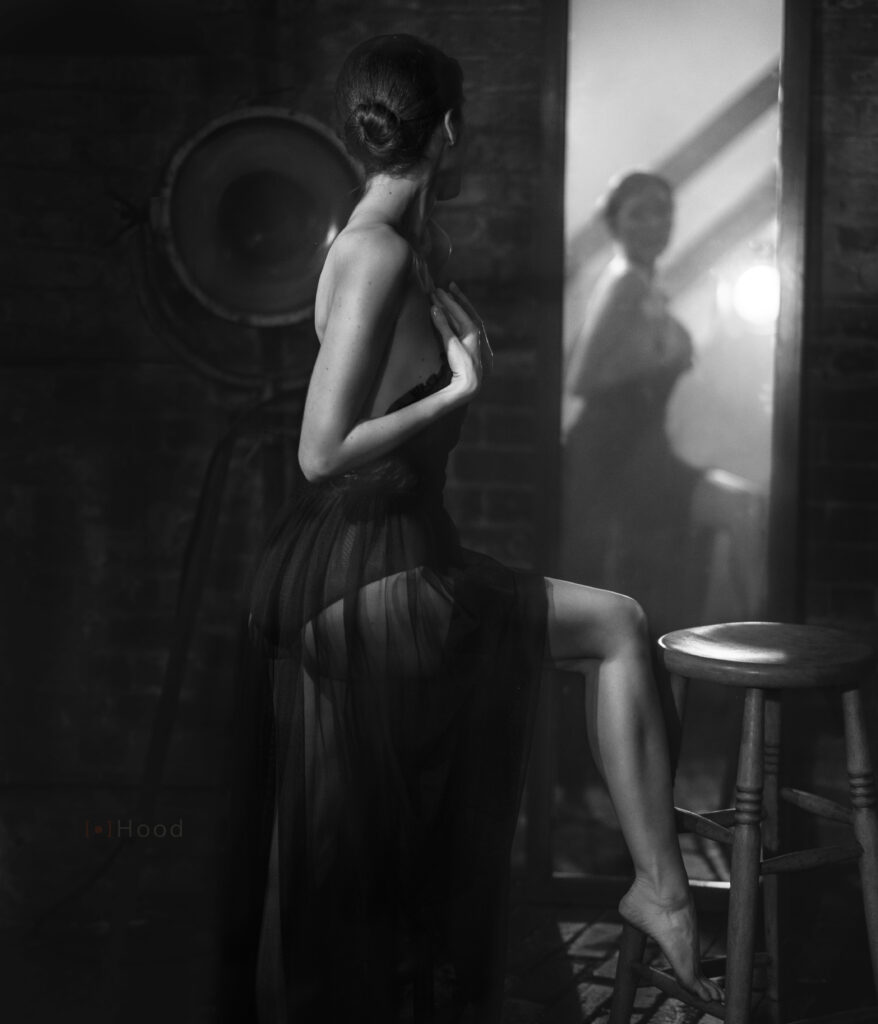

Fresnel lighting has a storied history in the world of cinema, particularly in classic movies of the 20th century. Named after French physicist Augustin-Jean Fresnel, pronounced (Fray-nel), these lights are renowned for their unique characteristics. Originally used in lighthouses, the Fresnel lens is supposed to mimic the sun but in a far more flattering way.
- Hard Light with Soft Edges:
- Fresnel lights produce a hard light that softens towards the edges. This quality makes them ideal for creating dramatic, high-contrast scenes that are synonymous with classic Hollywood films. Most Fresnel lights can be moved backwards and forwards behind the glass lens in order to change the lights beam from flood (wide) to spotlight (narrow)
Experiment with the spotlight position. Try having the soft edge fall across the models face. You can also obscure part of the model or background in shadow with barn doors attached to the lens.
- Fresnel lights produce a hard light that softens towards the edges. This quality makes them ideal for creating dramatic, high-contrast scenes that are synonymous with classic Hollywood films. Most Fresnel lights can be moved backwards and forwards behind the glass lens in order to change the lights beam from flood (wide) to spotlight (narrow)
- Highlighting Background Elements:
- These spotlights are perfect for accentuating different elements within a portrait scene. Whether it’s a vintage prop or a textured backdrop, Fresnel lights can draw attention to specific details without overwhelming the subject.
Historical Significance
In the early 20th century, Fresnel lighting became a staple in Hollywood filmmaking. Its ability to produce focused, directional light allowed cinematographers to shape scenes with precision. This control over light and shadow contributed to the iconic, dramatic look of classic movies, from noir films to sweeping romantic dramas.
Why Lighting Matters More Than the Camera
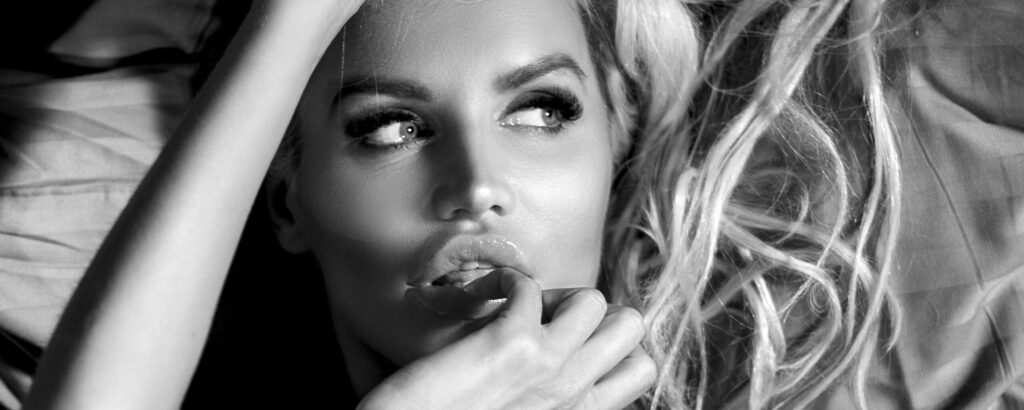
- Mood and Atmosphere:
- Lighting sets the tone for your portrait. Whether you want a soft, romantic feel or a bold, dramatic look, the right lighting can create the desired mood far more effectively than any camera.
- Highlighting Features:
- Good lighting accentuates the subject’s best features, while poor lighting can make even the most beautiful face appear flat or unflattering. Mastering lighting techniques ensures that your portraits highlight your subject’s unique qualities.
- Consistency Across Shots:
- Consistent lighting allows for a cohesive look across a series of portraits. This consistency is essential, especially in professional photography where maintaining a standard of quality is crucial.
Conclusion
While having a high-end camera can enhance the technical quality of your images, it’s the lighting that truly makes a portrait stand out. Whether you’re using flash lighting with soft boxes for controlled studio shoots or continuous lighting for ease and consistency, mastering the art of lighting will elevate your portrait photography to new heights. Embrace the techniques of classic Hollywood with Fresnel lighting to add drama and depth to your scenes, and remember that the true power of a great portrait lies in how you shape the light.
Fresnel lighting can be extremely expensive but you don’t need to spend 2k to 15k on LED HMI spotlights to create quality photography. There are cheaper products available on the market such as the old tungsten ARRI lights which have been superseded by more expensive LED equivalents but at the same time you can find cheaper LED Fresnel lights due to a high availability from a wide variety of companies.
Affordable Lighting Suggestions
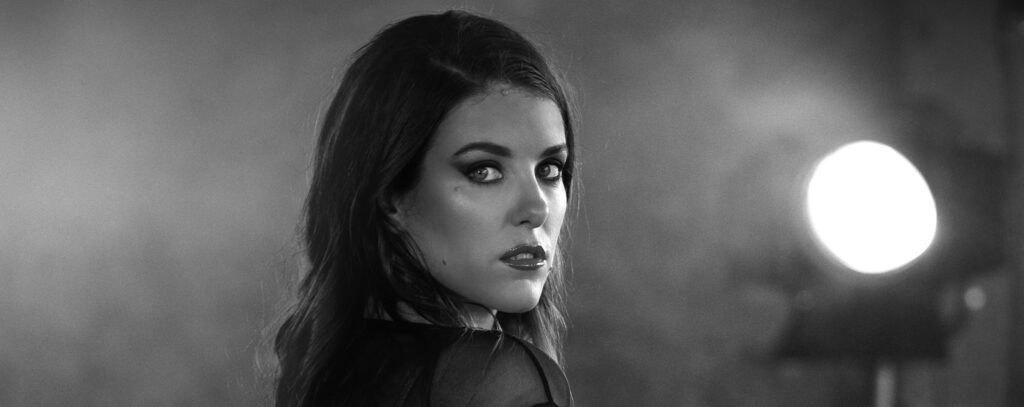
Tungsten and LED Spotlights
I personally would only use the tungsten spotlights in day ambient light to reproduce a sunset look and feel, as they produce a very warm glow of around 2700K – 3200K. These old spotlights can become very hot, to the point that they are possibly too hot to handle.
I have compiled a list of quality LED Fresnel spotlights from low price to mid range. Some of which I use myself. I would also suggest not buying much lower in power than 300W. My Main light, my go to main light is a 600W spotlight. This gives me a sufficient light power output to use a shutter speed of 125 to avoid hand shake and an ISO between 400 and 1250 to have a reasonable good quality low grain film look. Most of my indoor night photography is at 400 to 800 ISO. Another handy feature on some of the spotlights is Bi-colour, where you can change the colour temperature of the light to set different moods. These normally come at a slightly higher price but certainly worth having.
Also in the list are affordable Fresnel lens attachments and Barn doors to enable you to flood, spot and shape the light.
Spotlights can be top heavy when Fresnel lenses and barn doors are attached to the front, so a good quality heavy duty stand is recommended. I admit, I bought cheap stands when first experimenting with portrait photography only to have the things break on me in the middle of a shoot. Buying heavy duty has saved me money.
For affordable recommendations, please check out my list

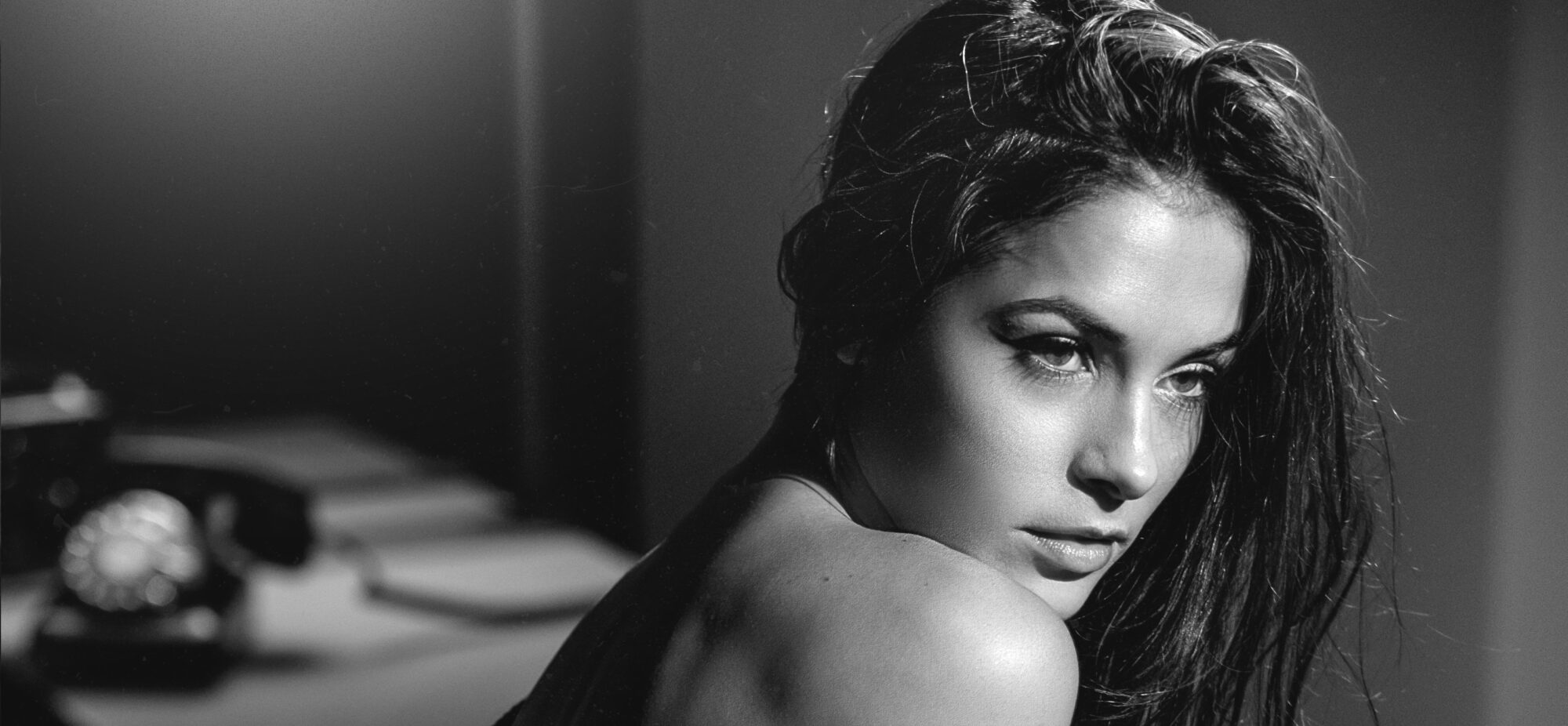
Normally I do not read article on blogs however I would like to say that this writeup very forced me to try and do so Your writing style has been amazed me Thanks quite great post